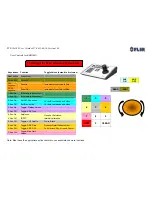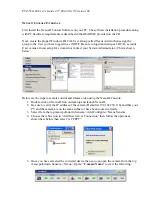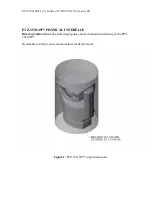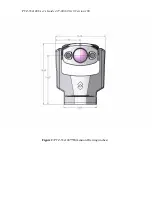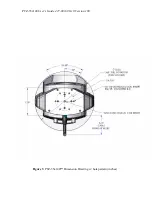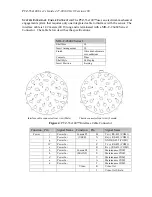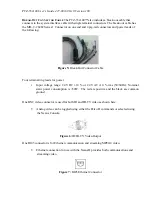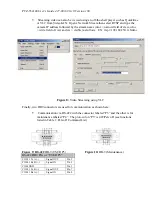
PTZ-35x140
Quick Start Guide 427-0011-00-12 Version 100
Thermometers, as radiation detectors, remained unchallenged until 1829, the year Nobili invented the thermocouple.
(Herschel’s own thermometer could be read to 0.2 °C (0.036 °F), and later models were able to be read to 0.05 °C
(0.09 °F)). Then a breakthrough occurred; Melloni connected a number of thermocouples in series to form the first
thermopile. The new device was at least 40 times as sensitive as the best thermometer of the day for detecting heat
radiation—capable of detecting the heat from a person standing three meters away.
The first so-called ‘heat-picture’ became possible in 1840, the result of work by Sir John Herschel, son of the
discoverer of the infrared and a famous astronomer in his own right. Based upon the differential evaporation of a
thin film of oil when exposed to a heat pattern focused upon it, the thermal image could be seen by reflected light
where the interference effects of the oil film made the image visible to the eye. Sir John also managed to obtain a
primitive record of the thermal image on paper, which he called a ‘thermograph’.
Samuel P. Langley (1834–1906)
The improvement of infrared-detector sensitivity progressed slowly. Another major breakthrough, made by Langley
in 1880, was the invention of the bolometer. This consisted of a thin blackened strip of platinum connected in one
arm of a Wheatstone bridge circuit upon which the infrared radiation was focused and to which a sensitive
galvanometer responded. This instrument is said to have been able to detect the heat from a cow at a distance of 400
meters.
An English scientist, Sir James Dewar, first introduced the use of liquefied gases as cooling agents (such as liquid
nitrogen with a temperature of -196 °C (-320.8 °F)) in low temperature research. In 1892 he invented a unique
vacuum insulating container in which it is possible to store liquefied gases for entire days. The common ‘thermos
bottle’, used for storing hot and cold drinks, is based upon his invention.
Between the years 1900 and 1920, the inventors of the world ‘discovered’ the infrared. Many patents were issued
for devices to detect personnel, artillery, aircraft, ships—and even icebergs. The first operating systems, in the
modern sense, began to be developed during the 1914–18 war, when both sides had research programs devoted to
the military exploitation of the infrared. These programs included experimental systems for enemy
intrusion/detection, remote temperature sensing, secure communications, and ‘flying torpedo’ guidance. An infrared
search system tested during this period was able to detect an approaching airplane at a distance of 1.5 km (0.94
miles), or a person more than 300 meters (984 ft.) away.
The most sensitive systems up to this time were all based upon variations of the bolometer idea, but the period
between the two wars saw the development of two revolutionary new infrared detectors: the image converter and
the photon detector. At first, the image converter received the greatest attention by the military, because it enabled
an observer for the first time in history to literally ‘see in the dark’. However, the sensitivity of the image converter
was limited to the near infrared wavelengths, and the most interesting military targets (i.e. enemy soldiers) had to be
illuminated by infrared search beams. Since this involved the risk of giving away the observer’s position to a

